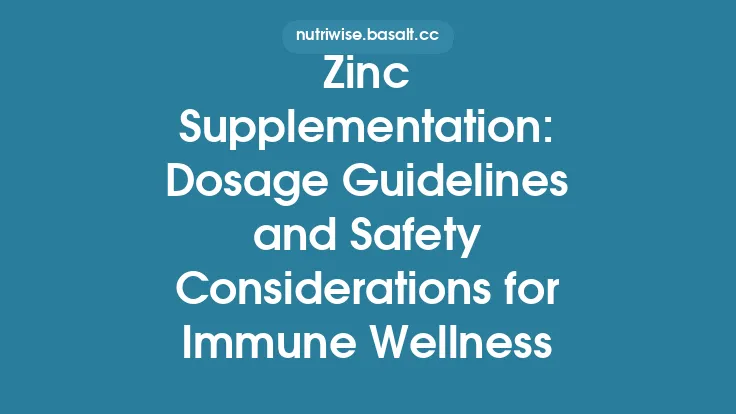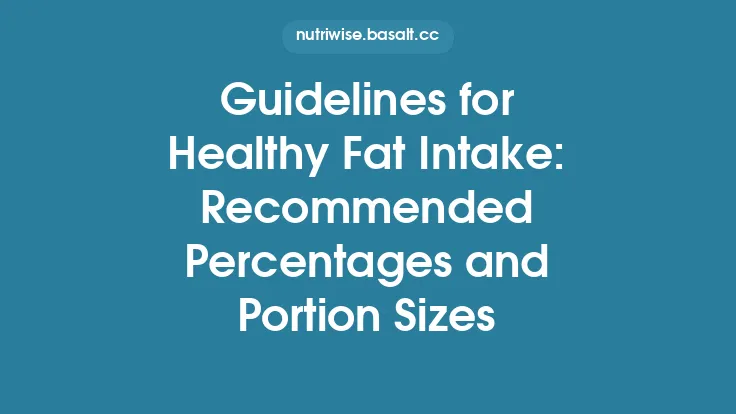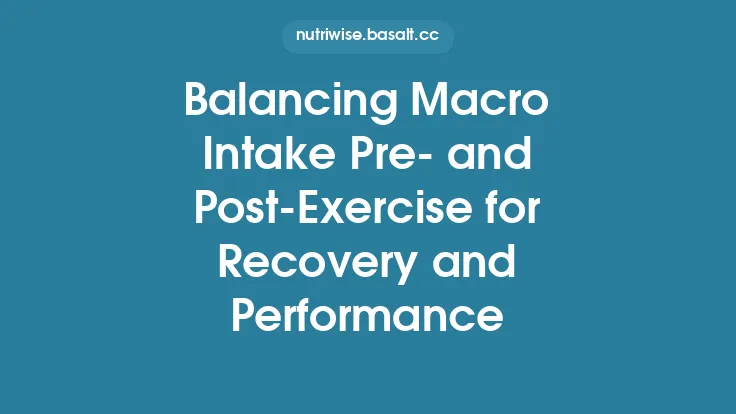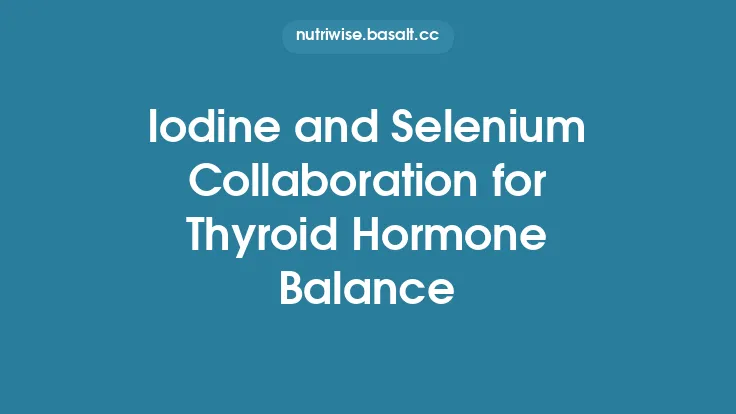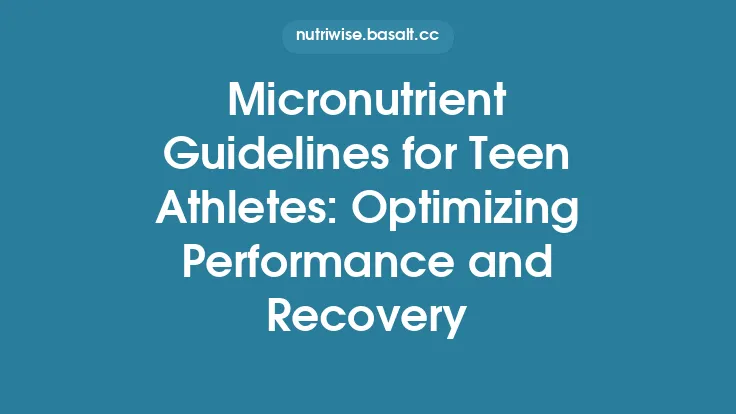Balancing selenium intake is a nuanced aspect of thyroid wellness that goes beyond simply “getting enough” of the trace mineral. While the thyroid gland relies on selenium for a variety of biochemical processes, the line between adequacy and excess is relatively narrow. Navigating this line requires an understanding of the mineral’s therapeutic window, the factors that influence individual requirements, and practical strategies for integrating selenium into a comprehensive thyroid‑support plan. Below is a detailed guide that walks you through the science, the assessment tools, and the day‑to‑day tactics you can use to keep selenium at an optimal level for thyroid health.
Understanding the Therapeutic Window of Selenium
Selenium exhibits a classic dose‑response curve: too little can impair enzymatic activity, while too much can trigger toxicity. The therapeutic window—the range between the minimum effective dose and the onset of adverse effects—is relatively tight for selenium, typically spanning 55–200 µg per day for most adults.
- Lower bound (≈55 µg/day): This is the estimated average requirement (EAR) for most healthy adults, reflecting the amount needed to sustain the activity of selenoproteins involved in thyroid hormone metabolism and antioxidant defense.
- Upper bound (≈200 µg/day): The tolerable upper intake level (UL) set by most health agencies. Chronic intake above this threshold raises the risk of selenosis, characterized by symptoms such as brittle nails, hair loss, gastrointestinal upset, and, in severe cases, neurological disturbances.
Because the margin between adequacy and excess is narrow, precise dosing—especially when using supplements—becomes essential.
Assessing Individual Selenium Needs
1. Baseline Dietary Intake
A quick audit of typical food sources (e.g., Brazil nuts, seafood, organ meats) can give a rough estimate of daily selenium exposure. However, the selenium content of plant‑based foods varies dramatically with soil composition, making dietary estimates less reliable in regions with selenium‑deficient soils.
2. Biomarker Evaluation
- Serum Selenium: Reflects recent intake but can be influenced by acute changes in diet.
- Plasma Selenoprotein P (SELENOP): Considered the most reliable functional marker of selenium status because it transports selenium to peripheral tissues, including the thyroid.
- Glutathione Peroxidase (GPx) Activity: Provides insight into the antioxidant capacity of the body, indirectly indicating selenium sufficiency.
When possible, a combination of these biomarkers offers the most accurate picture. Laboratories now often provide panels that include SELENOP and GPx, allowing clinicians to pinpoint whether a patient is truly deficient, replete, or approaching excess.
3. Personal Health Variables
- Genetic Polymorphisms: Variants in genes such as *SEPP1 and GPX1* can affect selenium metabolism, altering individual requirements.
- Thyroid Autoimmunity: While not the focus of this article, it is worth noting that some autoimmune profiles may influence selenium utilization.
- Age and Sex: Pregnant or lactating women, as well as the elderly, may have altered selenium kinetics, often necessitating modest adjustments within the therapeutic window.
Choosing the Right Selenium Form
Not all selenium supplements are created equal. The two most common organic forms—selenomethionine and selenocysteine—exhibit higher bioavailability than inorganic salts such as sodium selenite. However, the choice of form can affect both absorption kinetics and tissue distribution.
| Form | Approx. Bioavailability | Typical Dose Range | Notable Characteristics |
|---|---|---|---|
| Selenomethionine | 80–90 % | 100–200 µg | Incorporated into general protein pool; longer half‑life |
| Selenocysteine | 70–80 % | 100–200 µg | Directly used for selenoprotein synthesis |
| Sodium Selenite | 50–60 % | 50–100 µg | Rapidly reduced to selenide; less storage in tissues |
| Selenium‑Enriched Yeast | 70–85 % | 100–200 µg | Mix of organic forms; often used in clinical trials |
For most individuals seeking to fine‑tune their intake, selenomethionine or selenium‑enriched yeast are preferred because they provide a steadier release of selenium and are less likely to cause spikes that could push serum levels toward the UL.
Integrating Selenium with Overall Thyroid Care
Balancing selenium is most effective when viewed as part of a broader thyroid‑support strategy that includes:
- Iodine Management: Adequate iodine is essential for thyroid hormone synthesis, but excess iodine can increase oxidative stress, making selenium’s antioxidant role more critical.
- Vitamin D and Magnesium: Both influence immune modulation and thyroid hormone conversion; deficiencies can amplify the need for optimal selenium status.
- Lifestyle Factors: Stress reduction, regular sleep, and avoidance of environmental toxins (e.g., heavy metals) help maintain the delicate redox balance in which selenium operates.
By aligning selenium intake with these complementary elements, you create a synergistic environment that supports thyroid homeostasis without over‑reliance on any single nutrient.
Practical Tips for Daily Intake
- Start Low, Adjust Gradually: If you are initiating supplementation, begin with 50–100 µg/day of an organic form and monitor biomarkers after 8–12 weeks before considering an increase.
- Spread the Dose: Dividing the total daily amount into two smaller doses (e.g., morning and evening) can smooth plasma selenium fluctuations and improve tissue uptake.
- Pair with Protein‑Rich Meals: Organic selenium is absorbed via the same transport mechanisms as amino acids; consuming it with a protein‑containing meal enhances absorption.
- Mind the Nuts: A single Brazil nut can contain 60–90 µg of selenium, but the content varies widely. If you enjoy Brazil nuts, count them as part of your total daily intake to avoid accidental excess.
- Track with a Journal: Record supplement brand, form, dose, and any concurrent foods or medications. This log becomes invaluable when reviewing lab results with a healthcare professional.
Monitoring and Adjusting Your Selenium Status
Regular follow‑up is key to staying within the therapeutic window:
- Baseline Test: Obtain serum selenium and SELENOP before starting any supplementation.
- Re‑assessment Interval: Repeat testing after 3–4 months of consistent intake. Adjust the dose if SELENOP is at the high end of the reference range (>120 µg/L) or if you experience any signs of selenosis.
- Seasonal Considerations: Soil selenium content can change with agricultural cycles, potentially affecting dietary intake. Re‑testing annually helps capture these variations.
If biomarkers indicate that you are approaching the UL, reduce the supplemental dose or increase the interval between doses. Conversely, if levels remain low despite adequate dietary intake, a modest increase (e.g., an additional 25 µg) may be warranted.
Special Considerations: Pregnancy, Autoimmunity, and Age
- Pregnancy & Lactation: While the UL remains 200 µg/day, the recommended intake rises to 60–70 µg/day to support fetal development. Close monitoring is essential because both deficiency and excess can affect the child’s neurodevelopment.
- Autoimmune Thyroiditis: Some individuals with Hashimoto’s thyroiditis exhibit altered selenium metabolism. In such cases, a slightly higher end of the therapeutic window (150–180 µg/day) may be beneficial, but only under medical supervision.
- Older Adults: Age‑related declines in gastrointestinal absorption and renal clearance can shift the optimal range downward. Starting at 55–70 µg/day and titrating carefully is advisable.
Potential Interactions and Contraindications
| Interaction | Mechanism | Practical Implication |
|---|---|---|
| Vitamin E | Both act as antioxidants; synergistic effect | Co‑supplementation is generally safe and may enhance protective benefits |
| Heavy Metals (e.g., mercury, cadmium) | Selenium binds to these metals, reducing toxicity but also depleting selenium stores | In high‑exposure scenarios, monitor selenium status more frequently |
| Antithyroid Medications (e.g., methimazole) | May alter selenium metabolism indirectly via changes in thyroid hormone levels | No direct contraindication, but dose adjustments may be needed |
| Statins | Some evidence suggests statins can lower plasma selenium | Consider checking selenium status if on long‑term statin therapy |
Patients on anticoagulants should be aware that very high selenium intakes (>400 µg/day) have been linked to altered platelet function, though this is well above the UL and unlikely with proper dosing.
When to Seek Professional Guidance
- Unexplained Symptoms: Persistent fatigue, hair loss, or nail changes despite a balanced diet may signal an imbalance.
- Laboratory Anomalies: SELENOP or GPx values outside the reference range, especially if accompanied by abnormal thyroid function tests.
- Complex Health History: Existing autoimmune disease, chronic kidney disease, or ongoing chemotherapy can modify selenium handling.
- Pregnancy Planning: Preconception counseling ensures optimal selenium status without exceeding safe limits.
A qualified endocrinologist, registered dietitian, or functional medicine practitioner can interpret biomarker data in the context of your overall health picture and tailor a personalized plan.
Summary of Key Takeaways
- Therapeutic Window: Aim for 55–200 µg/day, with most adults thriving around 100–150 µg/day.
- Assess Accurately: Combine dietary review with biomarkers (serum selenium, SELENOP, GPx) for a true status picture.
- Choose Wisely: Organic forms (selenomethionine, selenium‑enriched yeast) provide superior bioavailability.
- Integrate Holistically: Align selenium intake with iodine, vitamin D, magnesium, and lifestyle factors.
- Monitor Regularly: Re‑test every 3–4 months after any dose change; adjust based on biomarker trends.
- Special Populations: Tailor doses for pregnancy, autoimmunity, and aging, always staying below the UL.
- Watch Interactions: Be mindful of heavy metal exposure, certain medications, and high‑dose vitamin regimens.
By applying these evidence‑based guidelines, you can maintain selenium at a level that supports thyroid wellness without tipping into excess. The result is a more resilient thyroid, better overall metabolic health, and a reduced risk of oxidative stress—key components of long‑term vitality.
